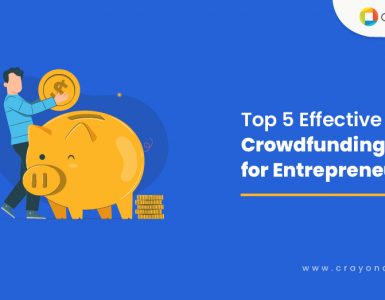If you are someone who is dreaming of starting up on your own, then this blog is for you.
Most often, people who aspire to become entrepreneurs come up with a lot of ideas. The real struggle is in getting them converted to a product. In this blog, we are going to give you step by step instructions on how to convert your idea into a product.
Step 1: Start with a side project
If you are someone who is working full time but still want to start a business of your own. The best thing is to start it as a side project. Initially, this might sound draining but this minimizes the risk and helps you focus. Another important step in order to succeed is to have a schedule. Set goals and make a schedule to work towards your goals.
Step 2: Mitigating market risk
Market risk is a huge factor that needs to be addressed at an early stage. So what is market risk?
Simply put market risk is the loss caused by financial movements. Most of the startups go bankrupt within the first 5 years of starting.

As a startup, you need to invest your time in building a risk management framework. Risk management framework is the process of identifying what could possibly go wrong and how to overcome them.
Understanding your customer base and knowing why they want to buy related products is the key risk factor that you need to assess as an entrepreneur before launching your product. This helps you understand the route that you need to follow to build your product in a timely fashion and most importantly within your budget.
Step 3: Building an audience before you build your product
Most of the product managers or entrepreneurs come back stating that they can build an audience once they have their product in hand. Building an audience before you release the product has proven good for so many companies. This helps you understand what your potential customers are going through and develop solutions to cater to their needs. At this stage, building your audience can help you with crowd funding as well.
When you start building your audience at an early stage you are also building a relationship with them. In this case, the trust is already established between you and your audience even before the product is ready.
Having an audience helps you a lot when it comes to testing your product. Because, these are the people who have the problem statement and a whole bunch of use-cases ready for you.
Moz (formerly known as SEOMoz) is a perfect example of building the audience before the product. They website had a huge fan base even before their product was launched. It gave out valuable content on SEO. The users were loyal and ready to stick to the product just for the content.

Step 4: Identifying user stories
A user story is the requirement of the user and why do they need it.
As an entrepreneur, you can make use of user stories to enhance a product idea. Let’s say your idea is to develop an email campaign software. Generating a fictional story will help you identify what exactly you need to build. This helps you identify the pain points of customers using other campaign products. Developing a product with this knowledge can help you in various aspects such as positioning, development and growth.
Here is a sample of what a user story should basically describe:
As a <user role>, I want <the feature/intention> so that <benefit>
By defining these user stories you are placing your customers at the center point of the issues that they are facing. This helps you understand how you can build a software that will benefit your audience. It also paves way to forecast the features that will be built iteratively.
Step 5: Design and Prototype
Prototype:
Minimum viable product (MVP) is a concept that most startups embrace. Eric Ries, an American entrepreneur, blogger, and author of The Lean Startup, defines MVP as that version of a new product which allows a team to collect the maximum amount of validated learning about customers with the least effort. This decides if your customers will actually purchase your product.
With this approach, you provide your potential customers or your users with the product still at an initial stage. This could be an application or a landing page that is operated manually behind the curtain. By doing this, you get to see what people do with your product rather than asking them what they do.
This gives you an opportunity to identify spots that your users find different to understand and change the logic behind it. This also gives you an early idea of whether or not your product will succeed in the market.
Design:
Designing a product plays a huge role in how your product is perceived. You need to invest quality time in UI and UX. A complicated product with an easy UI is a lot better than a easy product with a complicated UI.
Even if your tool/software solves all your customer requirements, chances are high that your users might not find the tool to be insightful if the UI is not easy enough. The design by itself should be simple and easy to use.
Step 6: Beta Testing
When your product comes to this stage, it means that it is almost ready. But before launching any product, it is essential that you open it out for public testing. Now if you are a startup and have built an audience, this should be easy for you. Identify businesses or users who will be able to test your product and offer you feedback. Beta testing provides you with a complete overview of the effectiveness of the tool/software.
Step 7: How to get your first payment
Most startups find it difficult to price their product. The truth is no time is the right time. You will never be ready, but having put in a lot of work from ideation to execution, you should decide to charge your product once you launch it. You can offer free trials for your users to test the product before they decide to purchase it. Read up on the different pricing models and choose a model that best fits your business.
In my experience at least, the best technical way to raise prices for existing customers without too much friction is to add new editions.
Create a bundle of new features (not old ones) and charge more for that going forward. This doesn’t anger existing customers and provides a graceful way to raise prices over time. We did this in the early days as we moved our list price per seat from $12/mo to $36/mo or more over time by adding enterprise editions. It worked fine. The early folks that paid $12 or less for the most basic edition and still do to this day.
Far more importantly: I think at some level, raising prices on past customers can be a borderline waste of time if you are still in high growth mode. Save the raises for new customers as of Date X.
Jason Lemkin, SaaStr
Step 8 : Create a landing page
Creating a landing page for your launch is crucial. This is one of the major touch points that your customers will use to evaluate you and your product. Your landing page should be crisp and inform your customers what your product is all about. Here are a few examples of successful landing pages created by various brands.




Step 9: Create a Buzz
In the ever-changing market, it is difficult to stick on to just one strategy to attain success. What works for one company might not work for another.
But here are a few things that you can consider if you want to create a buzz during your launch.
Engage Communities
Now, most startups prefer a soft launch where they silently release their product using Producthunt or Hackernews etc. This is great. But, the saturation is really high when it comes to launching your product on these platforms. Create a community long before you plan to launch your product and engage them when you do.
Get the right story out
The first image that you showcase is important, so tell the right story to the media. It is important that you bring out the correct brand story.
Hold an Event
Set up an event that enables different companies to showcase their products. This increases your audience for the launch. The more companies participating in the trade show the better. And, then launch your product in the event.
Bottom-line
Every idea only gets a single chance at the market when it is launched.
You either make it or break it, but it is not too hard to ensure the former.
If you just follow the right steps in the correct order.
Sure, you’d need to be persevering and hardwork and all that, but without a clear plan, your efforts would amount to nothing.
Don’t let that happen.
Follow the steps that we’ve laid out and start out on your journey toward realizing your entrepreneurial dreams.
And remember, you do not need to have technical skills to build a product. Product agencies like Crayon’d are out there just to help you out in transforming your idea.
Don’t hesitate to reach out!







Add comment